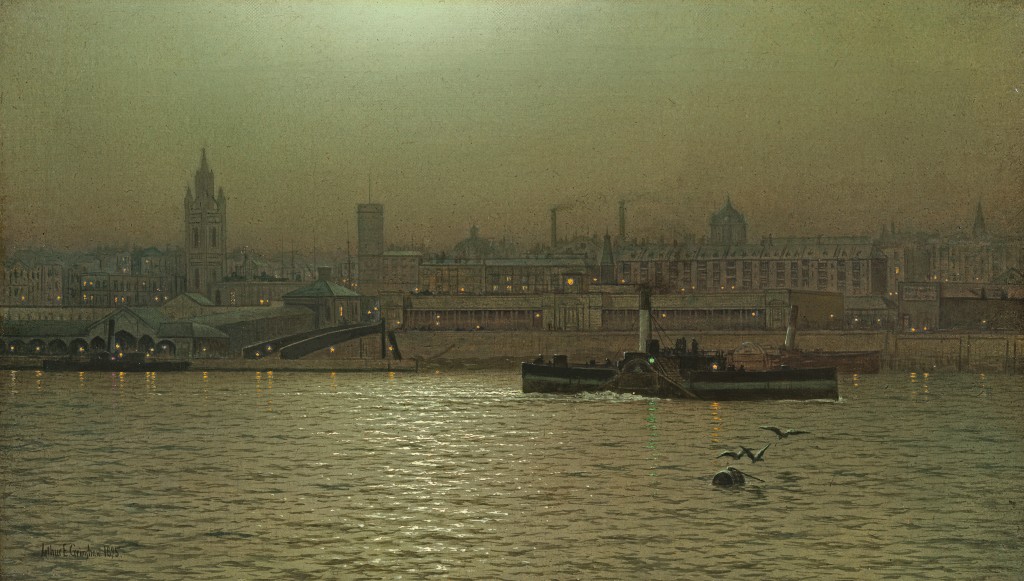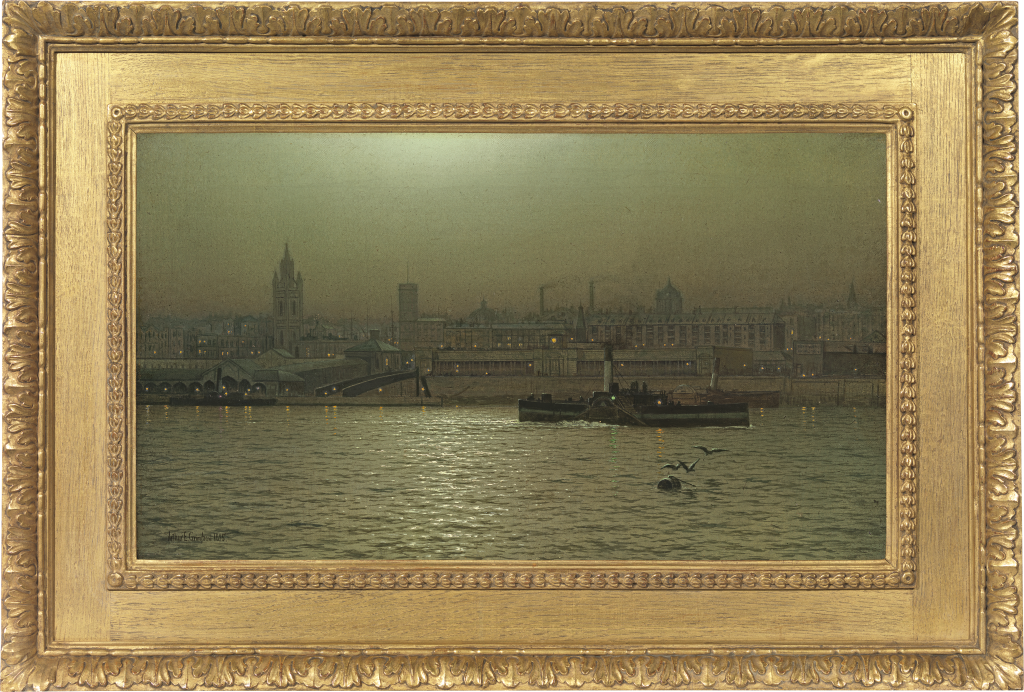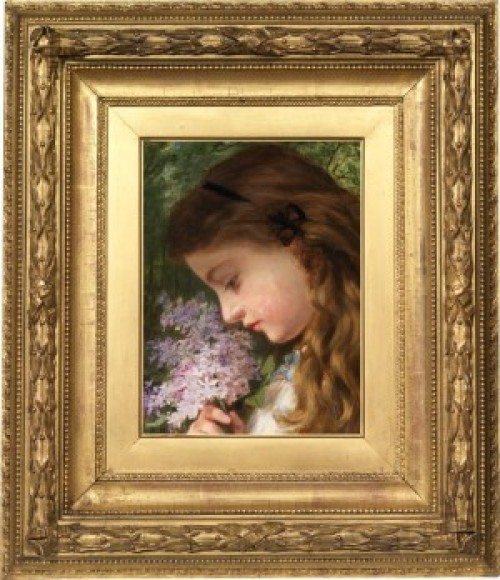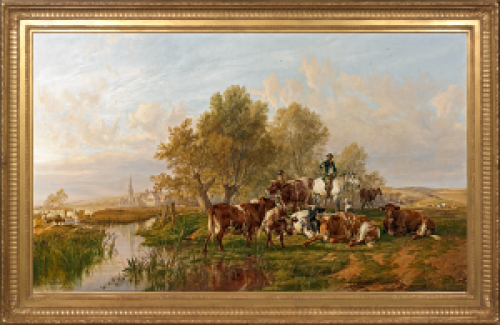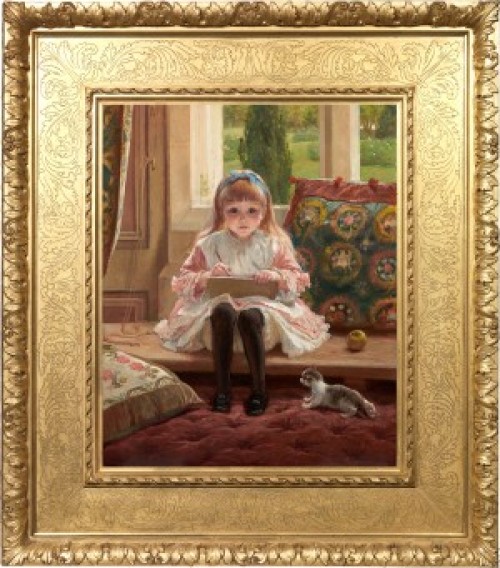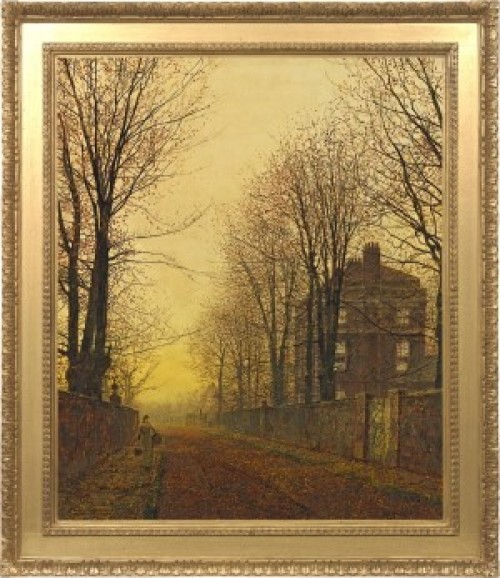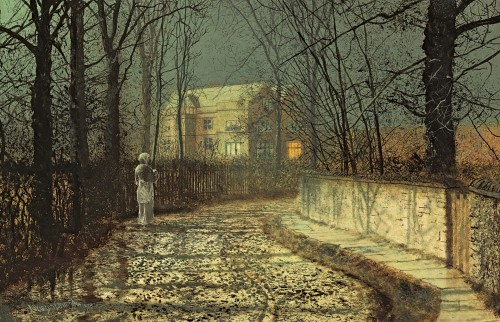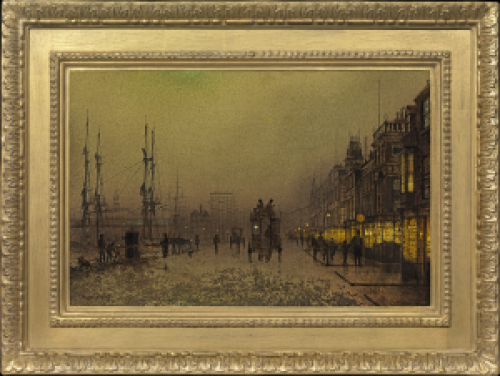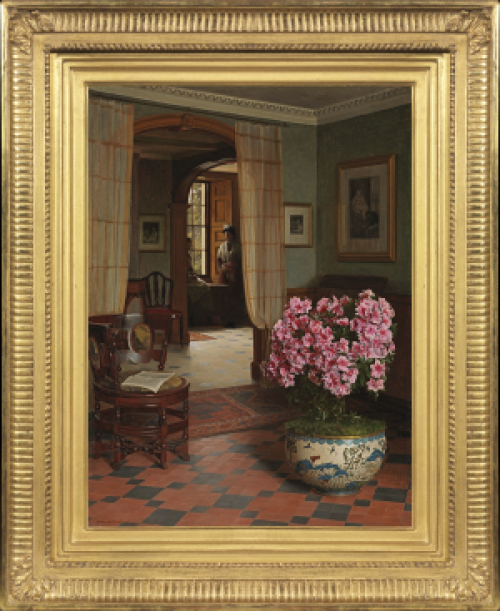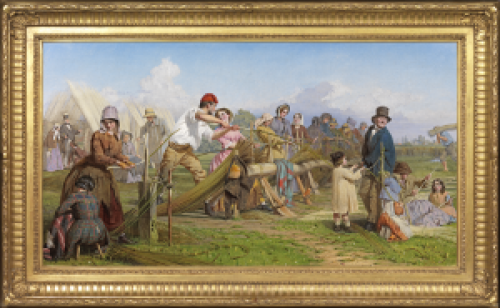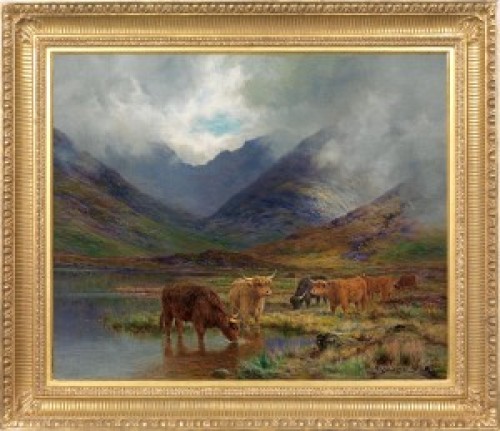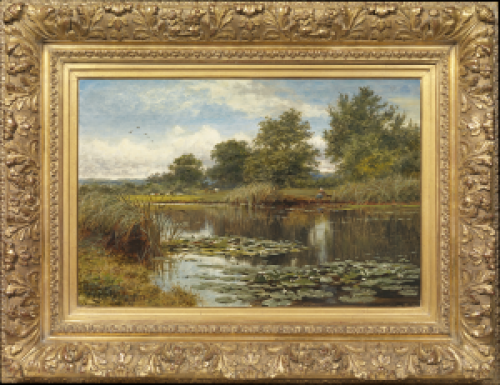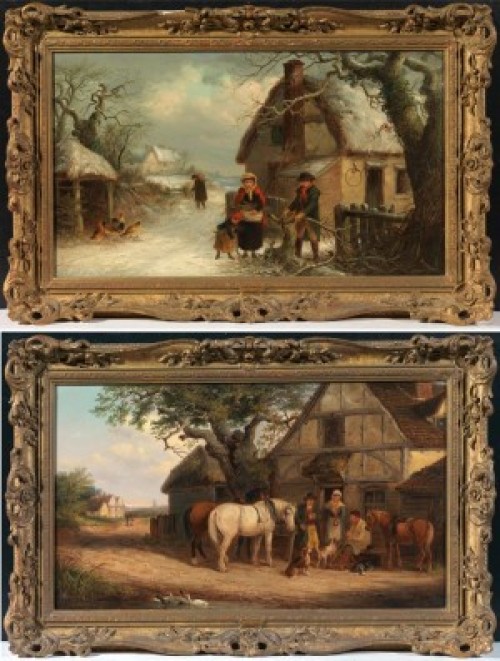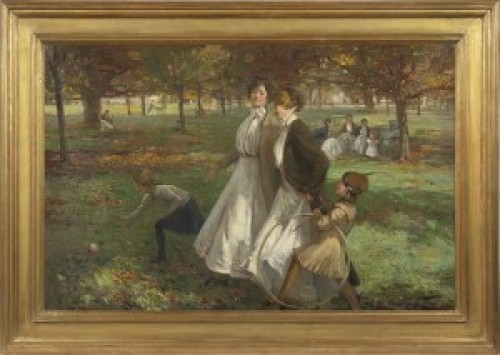ARTHUR E. GRIMSHAW
1868 - Leeds - 1913
Ref: BZ 135
Prince’s Landing Stage, Liverpool
Signed and dated lower right: Arthur E Grimshaw 1895;
inscribed on the stretcher: Prince’s Landing Stage, Liverpool
Oil on canvas: 10 ½ x 18 in / 26.7 x 45.7 cm
Frame size: 16 ¼ x 23 ¾ in / 41.3 x 60.3 cm
Provenance:
James Cooper Harding, a gift from the artist, then by descent
Unlike his father’s well-known depictions of Liverpool quayside, Arthur records here a detailed panorama of the waterfront from the river itself. Across the muted horizon he accurately articulates the spire of St. Nicholas’ Church on the left (known as the Sailors’ Church) marking the original shoreline of Liverpool, and to its right the Telegraph Tower, part of the original Tower Buildings designed by Sir James Picton in 1856. The small dome to its right is possibly St Paul’s Church built in 1769 and demolished in 1931. In the middle of the picture, the long, low buildings with the circular light are St George’s Baths, the first publicly funded baths in the country, designed by John Foster and opened in 1829. The multi-storeyed buildings behind and to the right, are the Goree Warehouses, built in 1811 and named after the Senegalese trading post (both since destroyed). The larger dome to the right is the grand Georgian Town Hall designed by John Wood and built c.1749. On the shimmering water which beautifully reflects the light of the moon and the dockside, Arthur includes three Mersey Ferries, paddle steamers, which plied their trade on the river. Peter Aughton writes that the Prince’s Landing Stage, opened in 1876, ‘was half a mile in length and was therefore capable of serving ferries, pleasure boats, tenders and packets all at the same time’ (Peter Aughton, Liverpool: A People’s History, Carnegie Publishing, Lancaster, 1990, p.221.)
We are grateful to John Moore MA, The Archives Centre Maritime Archives, Liverpool Museums
Arthur Grimshaw was the eldest child of John Atkinson and Frances Theodosia Grimshaw and like several of his siblings, inherited his father’s artistic talent. Atkinson taught his children painting and was anxious for them all to join his profession. Though Arthur had great skill, his main passion and vocation was music, which explains the relatively small number of paintings by him dating between 1890-1900. Jane Abdy writes, ‘he ran away from home at the age of seventeen to join an orchestra, and two years later became organist of St Anne’s Church, Leeds, a post he held until his death.’[1] Though Abdy suggests Arthur was later reconciled with his parents, more recently, Jane Sellars writes of Atkinson: ‘He could never quite forgive Arthur for choosing music above painting, although Enid was not quite so maligned for her choice of singing as a career. Louis became a painter and so did Elaine.’[2]
Arthur is recorded as the first Organist and Master of the Choristers of Leeds Cathedral, appointed in 1883 at the age of eighteen and remaining in the post for thirty years.[3] He also wrote and published compositions including a string quartet, a symphony, English folk melodies,[4] and several songs including ‘Twilight time’ and ‘Cradle song,’[5] as well as arranging orchestral pieces by Mr Edward German for the pianoforte at the composer’s request. Local newspaper articles reveal he lectured on Debussy at the Yorkshire Branch of the Incorporated Society of Musicians. Arthur’s numerous roles in the cultural life of Leeds at the end of the nineteenth and early twentieth century were frequently noted in the local press when he went missing just before his death in 1913.[6]
Arthur Grimshaw’s The Quayside, Newcastle upon Tyne, 1895, is in the collection of the Laing Art Gallery, Newcastle.
[1] Jane Abdy, ‘Atkinson Grimshaw’s Family’, Atkinson Grimshaw, exh. cat., Alexander Gallery, London, 1976, p.25. See also Alexander Robertson, Atkinson Grimshaw, Phaidon, London, reprinted 2012, p.123.
[2] Jane Sellars, ‘The girl with the umbrella’, Atkinson Grimshaw: Painter of Moonlight, exh. cat., Mercer Art Gallery,
Harrogate, 2011, p.69.
[3] https://www.dioceseofleedsmusic.org.uk/a-history-of-music-at-the-cathedral/
[4] Breitkopf and Hartel published 2 vols of ‘Old English Tunes: Ballad-tunes and Dances of the 16th and 17th
Centuries’, harmonized by Mr Arthur E Grimshaw, Yorkshire Post and Leeds Intelligencer, 18th June 1913.
[5] ‘Some new music’, London Evening Standard, 30th December 1897, p.6.
[6] Lancashire Evening Post, 4th August 1913, p.2. ‘The Hawksworth Moor Tragedy’, Leeds Mercury, 4th August, p.3


